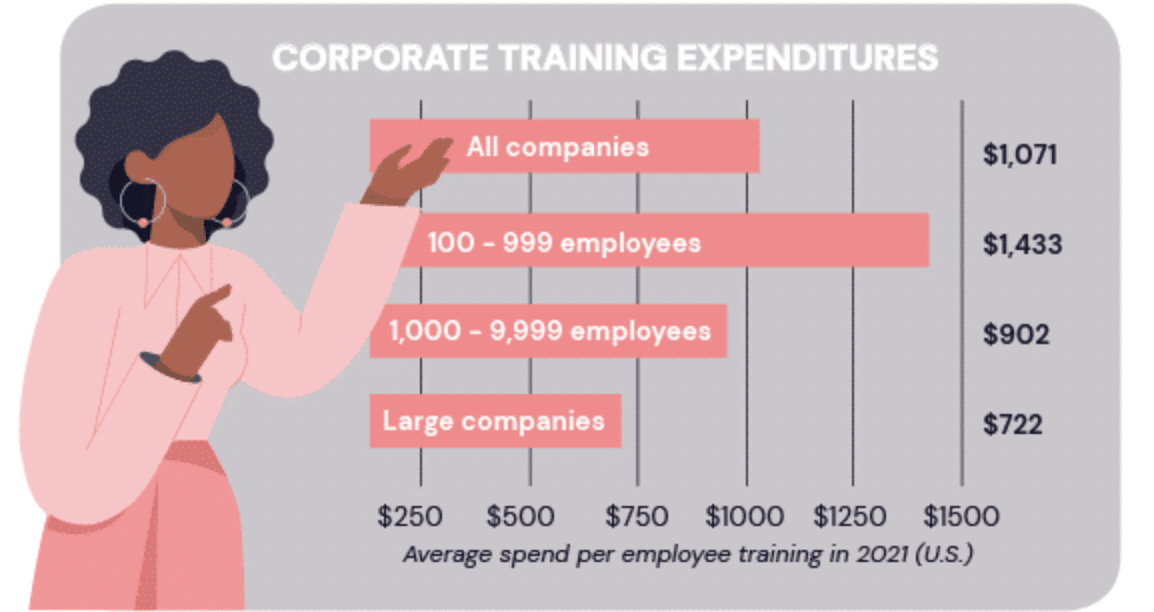Once upon a time, some manager decided that the best way to let employees know how they were doing was to summon them once a year for a nerve-wracking reckoning with the bosses called an “annual performance review.”
During that meeting, they’d discuss what the employee was doing wrong, the things he was getting right, and then say goodbye for another year until it was time to do it all over again.
This was the norm for decades in HR, even though the annual performance review has always been considered malign by manager and employee alike. For managers, it meant a huge block of time spent evaluating, ranking, and meeting with employees. For employees, it meant ambiguous rankings that hurt morale more than it boosts.
In short: The annual performance review has some major flaws that aren’t helping anyone. And if you don’t believe us, just ask the 11,000 employees at Adobe.
In fact, in a case study created by Bersin by Deloitte, it’s clear that annual performance evaluations were getting Adobe nowhere. Here are some of the answers they received:
“Stack ranking is a soul-less and soul-crushing exercise.”
“I have seen and experienced the reaction to the review process being a primary driver in driving good people from the company.”
Crushing souls? Driving good people away? The annual performance review wasn’t exactly helping Adobe manage talent resources.
The takeaway from this case study is obvious: Annual performance reviews don’t provide a comprehensive view of how employees are performing. The review process itself can create anxiety, and even good employees can be discouraged by the lack of feedback over the course of a year.
So what’s the solution? They did away with them in favor of regular check-ins and had amazing success.
Adobe found that regular feedback, coupled with meaningful goal-setting, was a much better way to motivate employees. By replacing the annual performance review with frequent check-ins, they found that employees felt more engaged, were far more aware of their progress, and were more likely to stay with the company.
But why did it fail to begin with? The annual performance review had been around seemingly forever, so what did Adobe find that put the nail in the coffin?
The Problems with Traditional Performance Reviews
There are several reasons why the typical annual review model fails both managers and employees.
1. Flawed by design
First, the very infrequency of an annual review means that projects may be long over by the time managers are able to provide feedback. Most people’s work ebbs and flows: an employee might go from the high of a completed project one week to the low of a lost account the next.
How can an annual review possibly encompass all of the feedback necessary to give kudos when positive comments are due and offer real suggestions and ideas when constructive criticism is necessary?
2. Ranking is an insufficient measurement for managers
What’s more, simply ranking employees doesn’t tell managers anything about how to, well, manage them. A ranking can’t give you information about an employee’s talents and proficiencies, about past successful projects, or areas in need of strengthening. It’s just a rudimentary number that can pit employees against each other, give them a false sense of security, or hurt morale.
In the grand scheme of things, annual reviews mean nothing because it doesn’t help the employee discover their top skill sets, and similarly doesn’t help managers learn how to harness each employee’s top skill sets.
3. They have a heavy emphasis on financial rewards and punishments
When it comes to evaluating performance, there are far more factors that come into play besides financial and fear-based motivations. Having a company full of employees constantly stressed out in fear of losing their jobs creates a culture where risk is not taken, and therefore, innovation and creativity lag.
We as humans want to try new things, explore other skill sets, and grow and develop our talent and career as we move forward. The annual performance review just doesn’t fit this mold.
4. They don’t foster an open dialogue
While no manager (or employee, for that matter) wants to admit it, being called into the big office is intimidating. You and your performance for the entire last year are being judged in one hour. There’s no way for the employee to ask questions, voice concerns, or provide feedback.
So how is any employee meant to see the meeting as an opportunity to learn and grow? A manager’s objective in an annual performance review isn’t to guide or coordinate with their employee so much as it is to give the employee a passing or failing grade. The review is a one-way dialogue.
The annual performance review has had its day in the sun, but it’s time to move on to something better. Regular feedback and goal-setting are much better tools for helping employees succeed. So what should we be using instead of the annual performance review?
The Alternatives to Traditional Performance Reviews
The key to success is regular, consistent feedback where regular check-ins happen along the way.
Instead of making employees feel helpless, it opens a dialog and gives the chance for honest, healthy, and open development along the way. Instead of berating employees when it’s too late, regular check-ins help employees stay on the right path for success.
Swapping to frequent check-ins helped managers and employees alike stay on the same page and ensure that everyone was working together to achieve the same goals. But Adobe didn’t just stop there – they changed the medium along with the mode.
Adobe rolled out an online platform to give employees and their managers a community to collaborate. Where the company’s employee reviews were once about checking a box, it has now become about creating meaningful conversations about employee performance and career development.
This platform allowed Adobe to track employee progress, create open dialogues between managers and employees, and analyze data about their progress. With goal-setting, specifically, employees are now able to set and track goals alongside their managers. These goals can be updated and adjusted as needed, and managers hold quarterly check-ins to discuss the employee’s progress.
After this total overhaul, Adobe circled back with their employees, seeing how they felt about their new system. Thankfully, that’s when they started getting feedback like this:
“So excited that we now have a centralized system to keep track of our performance, career growth, and feedback in one place! This will help spur new ideas for my career growth and add depth to conversations with my manager.”
“The quarterly conversation allows me to reflect on what I’ve done, who I want to be at the company, and gives me clarity on what I need to do to perform my best.”
“There’s something really powerful about having access to documented feedback, both as an employee and a people manager. It gives me a 360 view of my direct reports and having everything on record serves as a helpful reminder of how I can best support each of my employees.”
See what a massive difference the quarterly check-ins made? This system doesn’t seem nearly as “soul-crushing.”
Swapping Out Annual Reviews for Quarterly Check-ins
Adopting a similar method for our own talent management at ELM has definitely helped us cultivate and grow as managers and employees.
Instead of annual performance evaluations or ranking employees, we have what are called “one-on-one meetings” which are regular check-ins to let employees know how they’re doing, and give them the props they deserve when they do things right in a timely manner.
This model of continuous feedback means we’re always communicating with authentic, personal, and tangible missives to help us all become more successful in our roles.
Our leadership model we follow called Positive Leader has also helped us shift our internal leadership from managers to coaches. If you want to develop a company with high performers, coaching and empowering serves as a much better model to cultivate and sustain employee motivation.
This is supported by professional research, as well. Research psychologists at Kansas State University, Eastern Kentucky University, and Texas A&M examined the effects negative feedback has on performance and found that it powerfully hinders employees from wanting to improve.
That’s why we focus on our employees’ growth, not what they’re doing wrong. We coach at our company by really digging into what each employee wants most from not only a professional standpoint, but a personal one, and work to align the two and help them discover the skills that they excel in.
Each leader makes sure that employees are able to utilize their top skills, and also get creative in helping employees explore new opportunities within the company that align with their skills that promote learning, and consistent growth and development in their career.
Shifting our focus from employee assessment to ongoing employee growth has brought far more employee satisfaction. We’ve found very similar results to Adobe, and we think you will, too.
If your goal as a company is to cultivate and sustain a culture of high performers, the annual performance review won’t be your saving grace. Instead, the key to success is regular, consistent feedback where regular check-ins happen along the way.
Conclusion: It’s Time for a Change
Basically, what we are saying is that it’s time to drop the annual review and bring performance management to align with the workforce of 2023.
But don’t just take our word for it; take it from Adobe: When they unrolled their new management program and did away with annual performance reviews, the global training for managers scored a 125 percent attendance rate. Clearly, something was broken and Adobe was able to fix it.
No more morale-killing evaluations; they started treating employees as intelligent individuals which keep them productive and happy– with their souls totally intact.
So, are you ready to take your performance management to a new level in 2023?
Whether you need an effective way to let your employees know about how your new management system ties into their success, or you need a way to ramp up managers to learn how to coach and develop today’s millennial workforce, learning plays an integral role in performance management.
Connect with us here to talk about the current challenge you are trying to solve, and performance goals you want to achieve. By embracing a management system focused on growth and leadership development, you can empower your team to become their very best, and create a culture of excellence.
It’s time to ditch the annual performance review and start developing a culture of continuous feedback and growth. Start today!






